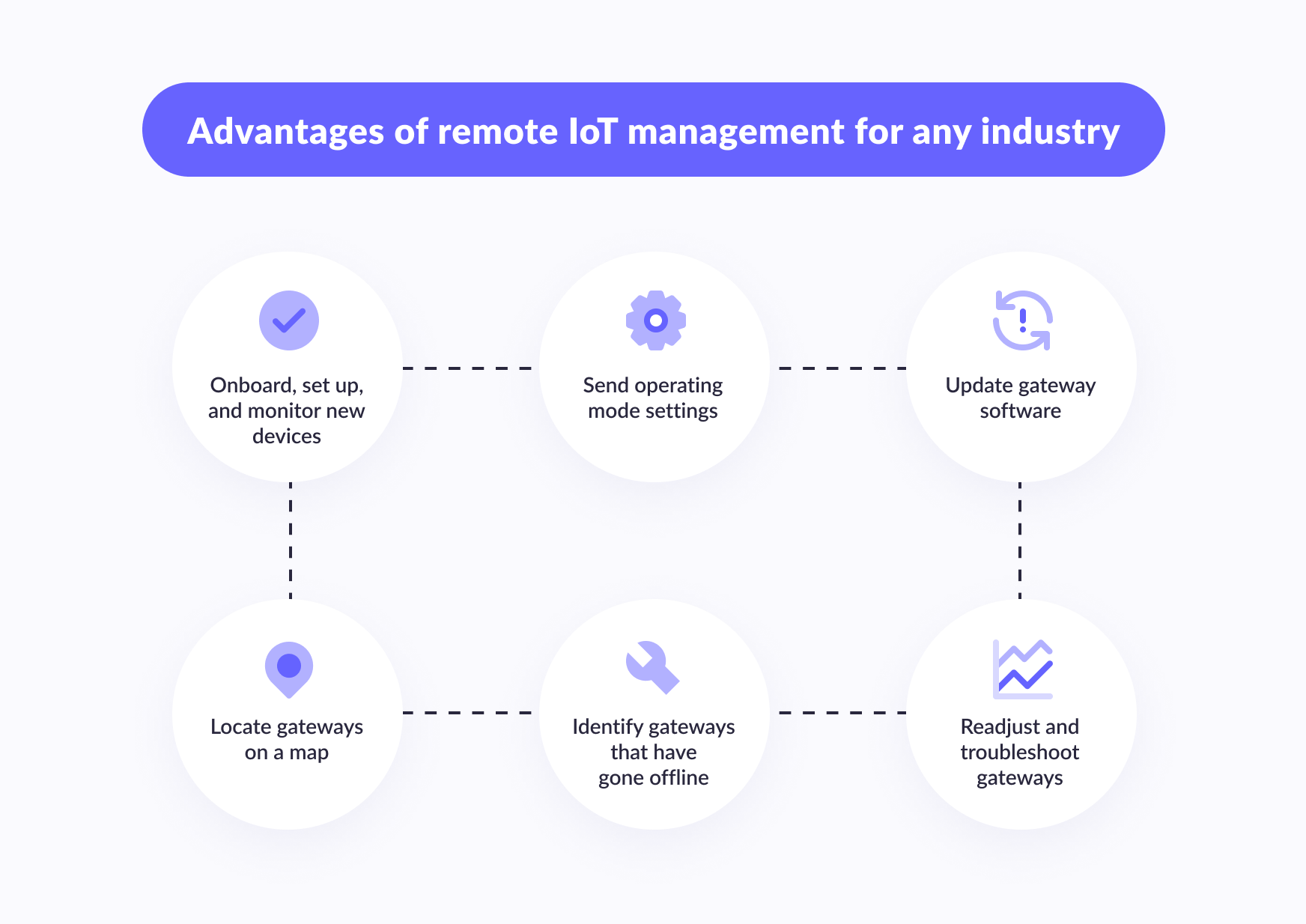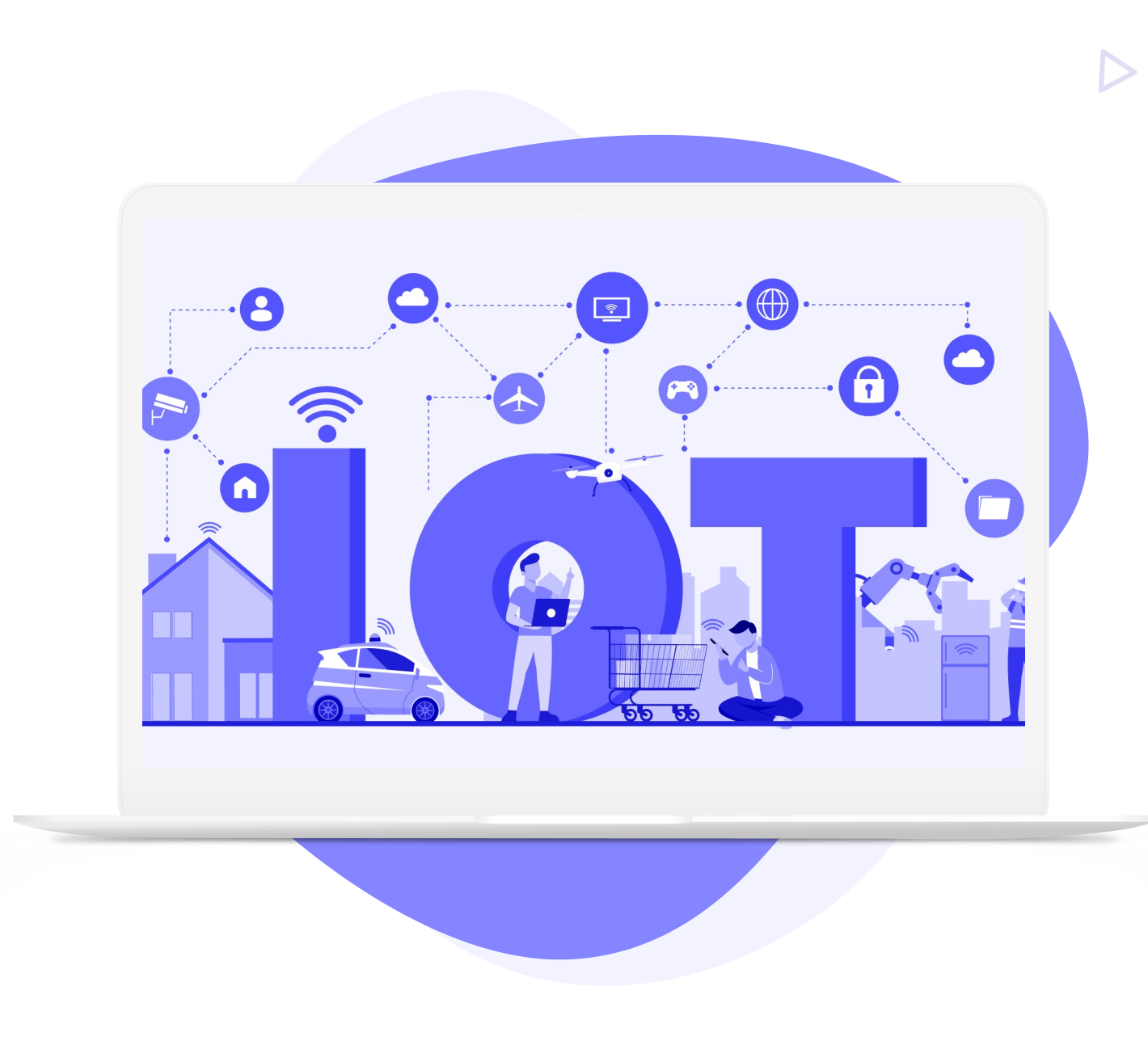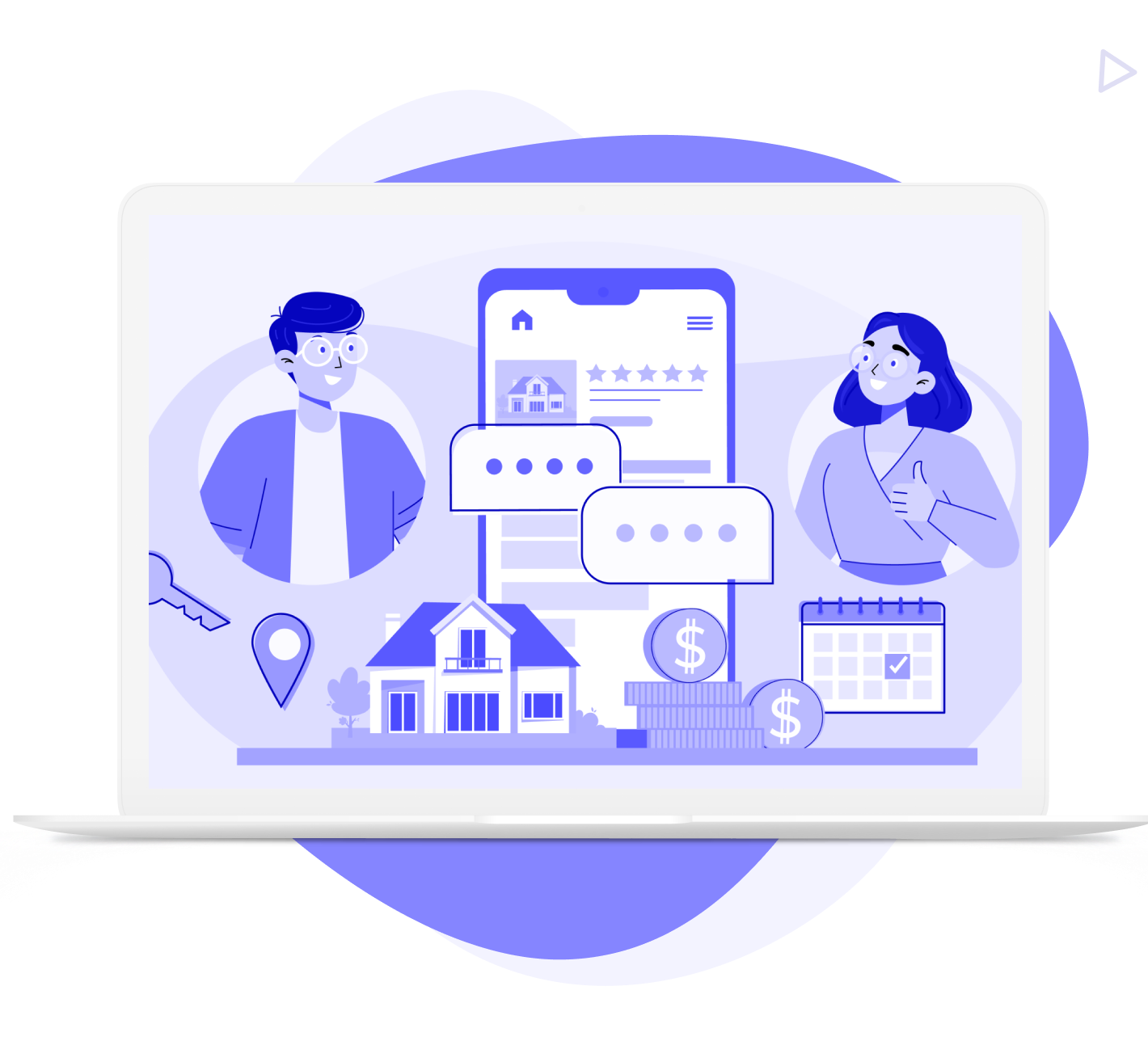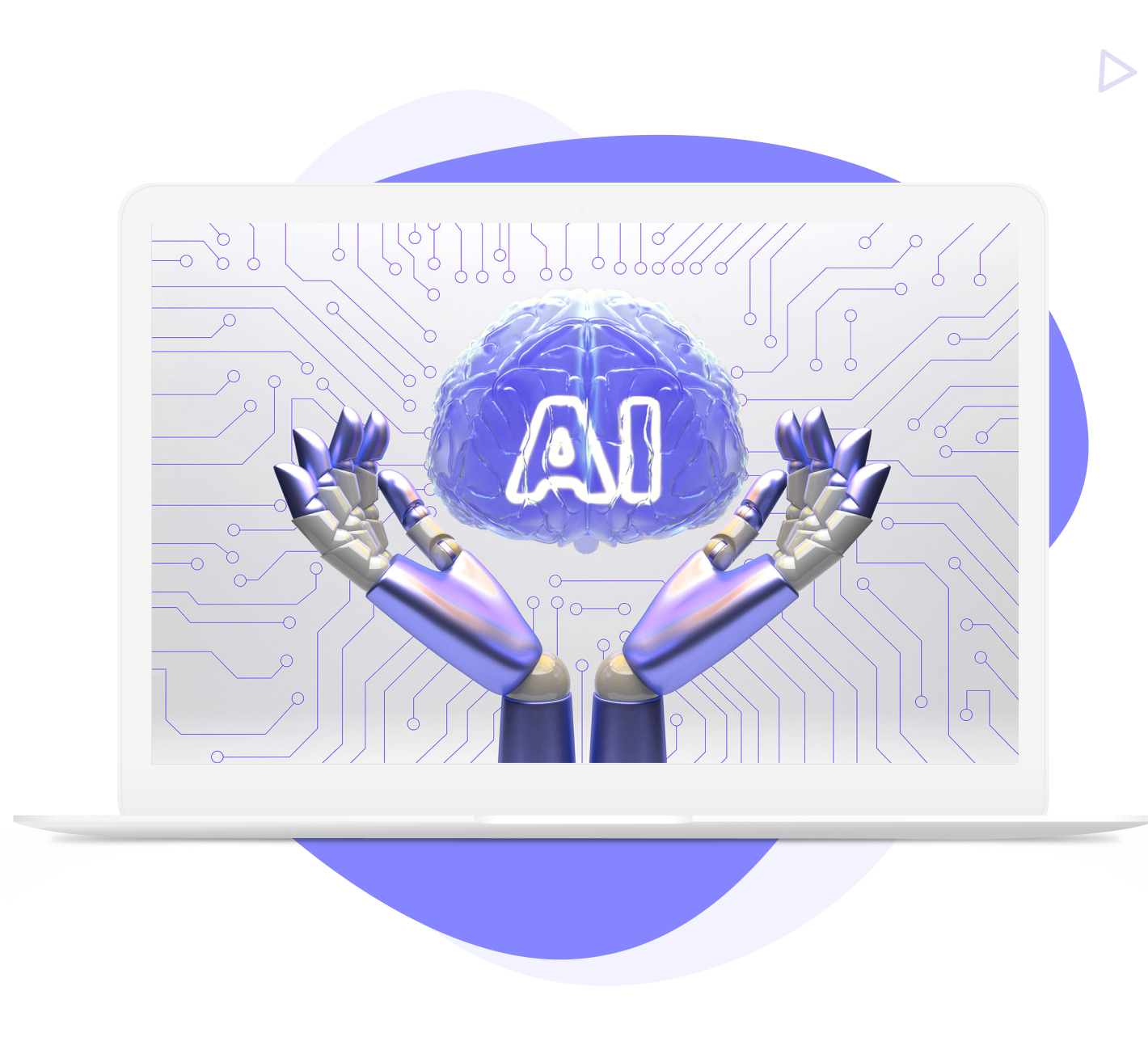In 2021, there were over 10 billion IoT devices in the world, and by 2025, according to IDC forecasts, the global volume of data generation will exceed 73 zettabytes or 73 trillion gigabytes. It is impossible to quantify digital data in physical terms, but if you write all these gigabytes on floppy disks of the ’90s and put them in a chain, this chain will be 10 thousand times longer than the distance from the Earth to the Moon. In just a few decades, the volume of IoT data has grown exponentially — and that growth is likely to continue. How are these systems managed? How do they work?
In this article, you can find the benefits of IoT for remote management in different industries, the challenges, how IoT devices work, software that can help in IoT remote management, and much more.
What Is IoT Device Management?
IoT devices are our eyes and ears where we cannot physically be. They receive whatever data they are programmed to collect. We then compile this data and analyze it to gain insights and automate subsequent actions or decisions. This process consists of four key steps:

- Data collection. IoT devices use sensors to get data from their environment. This data can be as simple as temperature or as complex as real-time video streaming.
- Data exchange. IoT devices send this data to a public or private cloud system (device-system-device) or another device (device-device) or store it locally for processing at the edge using available network connections.
- Data processing. At this point, software solutions are programmed to do something based on this data, such as turning on a fan or sending an alert.
- Actions based on received data. It analyzes the accumulated data from all devices on the Internet of Things. This stage provides powerful insights for confident action and business decision-making.
IoT Device Management is a process that consists of provisioning, identification authentication, configuration, control, monitoring, diagnostics, and software maintenance & updates of device ecosystems that are connected to each other via Bluetooth, Wi-Fi, LoRa, and other wireless networks.
Benefits Of IoT Remote Management For Industries

The Internet of Things for business is a powerful, innovative technology that enables companies to move forward, expand existing and discover new opportunities, maintain a competitive edge in the market, and increase operational efficiency. Let’s talk about remote IoT management benefits for different industries.
Retail
Customer-facing IoT solutions are increasingly being used to improve the experience in stores. Motion-activated smart cameras, smart shelves, beacons, and RFID technologies help shoppers find products using a mobile app. They make it easy to share inventory information and even send promotional offers to customers in a relevant context while they are in the store. As the lines between in-store and online shopping are blurring, IoT solutions can enhance the customer experience with delivery and vehicle tracking, allowing customers to better tailor their shopping plans.
Agriculture
The use of the Internet of Things in agriculture is an important opportunity for forward-thinking activities that increase production while improving food safety and delivery. From water management to crop and livestock monitoring, sensors, modules, and gateways work together to offer accurate, real-time information that is collected and analyzed for better decision-making, cost validation, and streamlined compliance.
Healthcare
Increasingly, you can see IoT-based consumer medical devices such as smartwatches and drug dispensers that help doctors monitor patients remotely. However, some of the most exciting advances in telemedicine are related to smart surgical instruments. This is especially true for patients in remote or underdeveloped regions. Such tools allow telecommuting physicians to connect with the world’s top surgeons, perform guided surgeries, conduct remote diagnostics, and even monitor anesthetized patients during this critical time.
Energy
Smart meters and equipment operation sensors at substations allow you to monitor the position of electrical communications, take into account and plan the consumption/supply of electricity, and turn on devices. The state today obliges the population, organizations, and businesses to install metering devices that send data to energy supply companies without user intervention.






